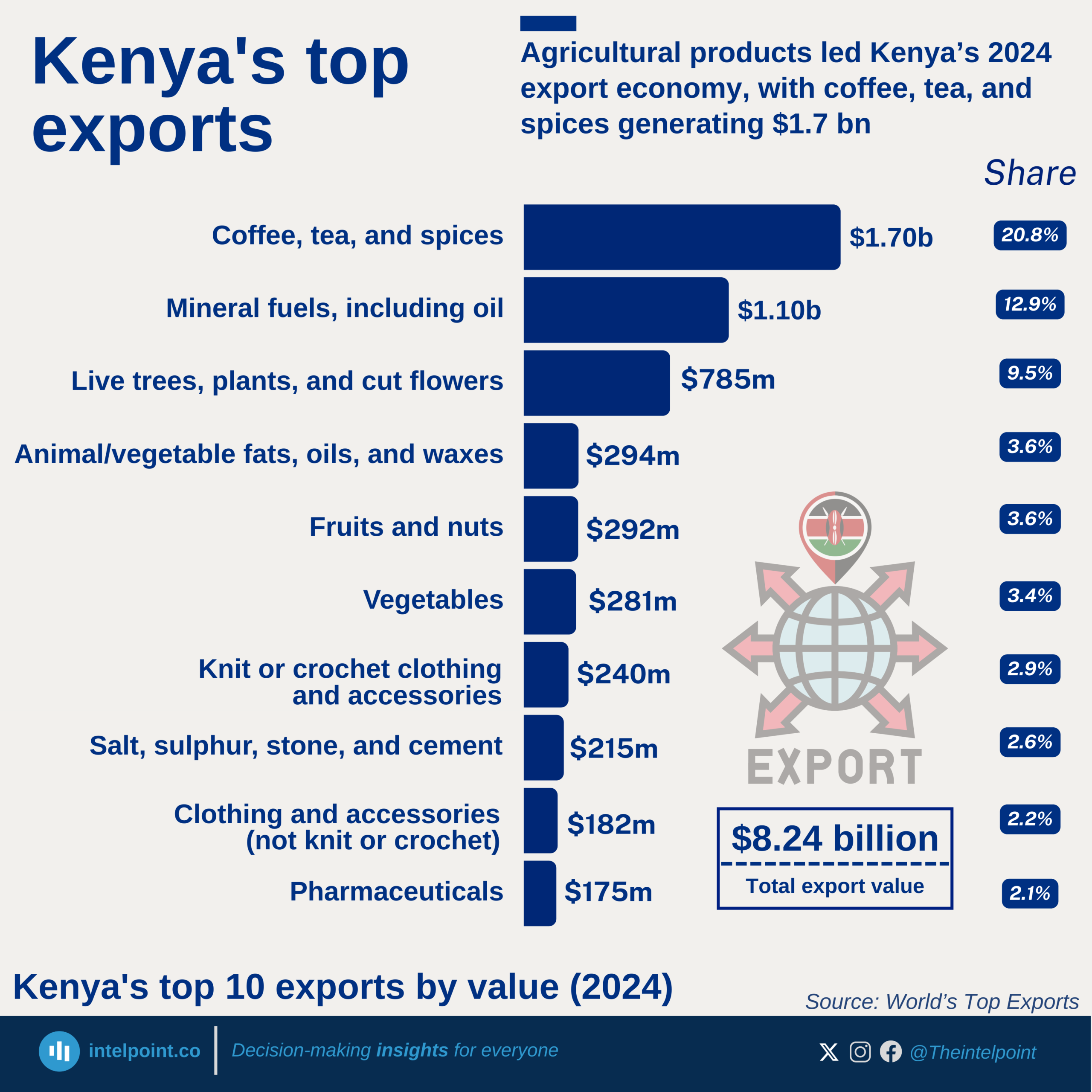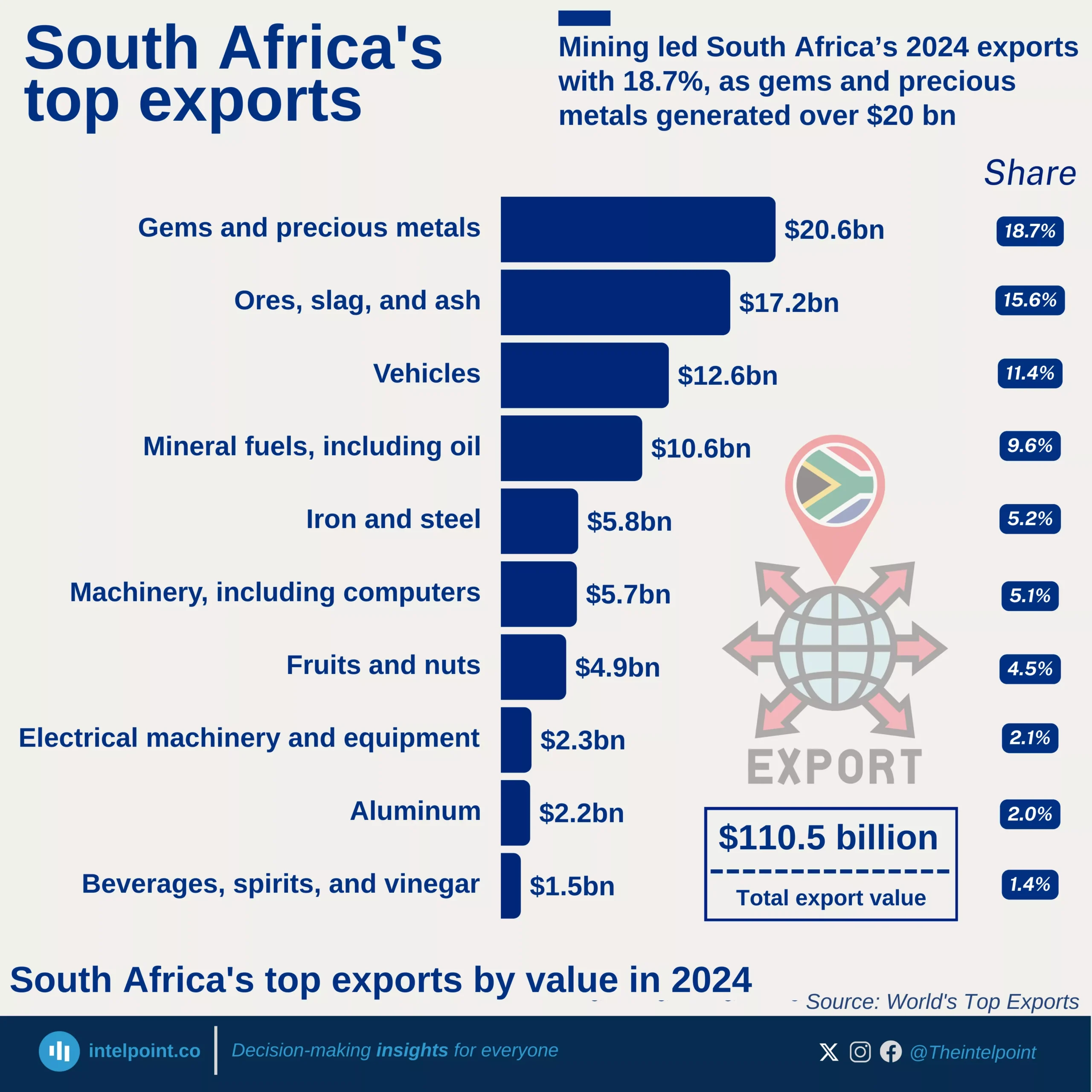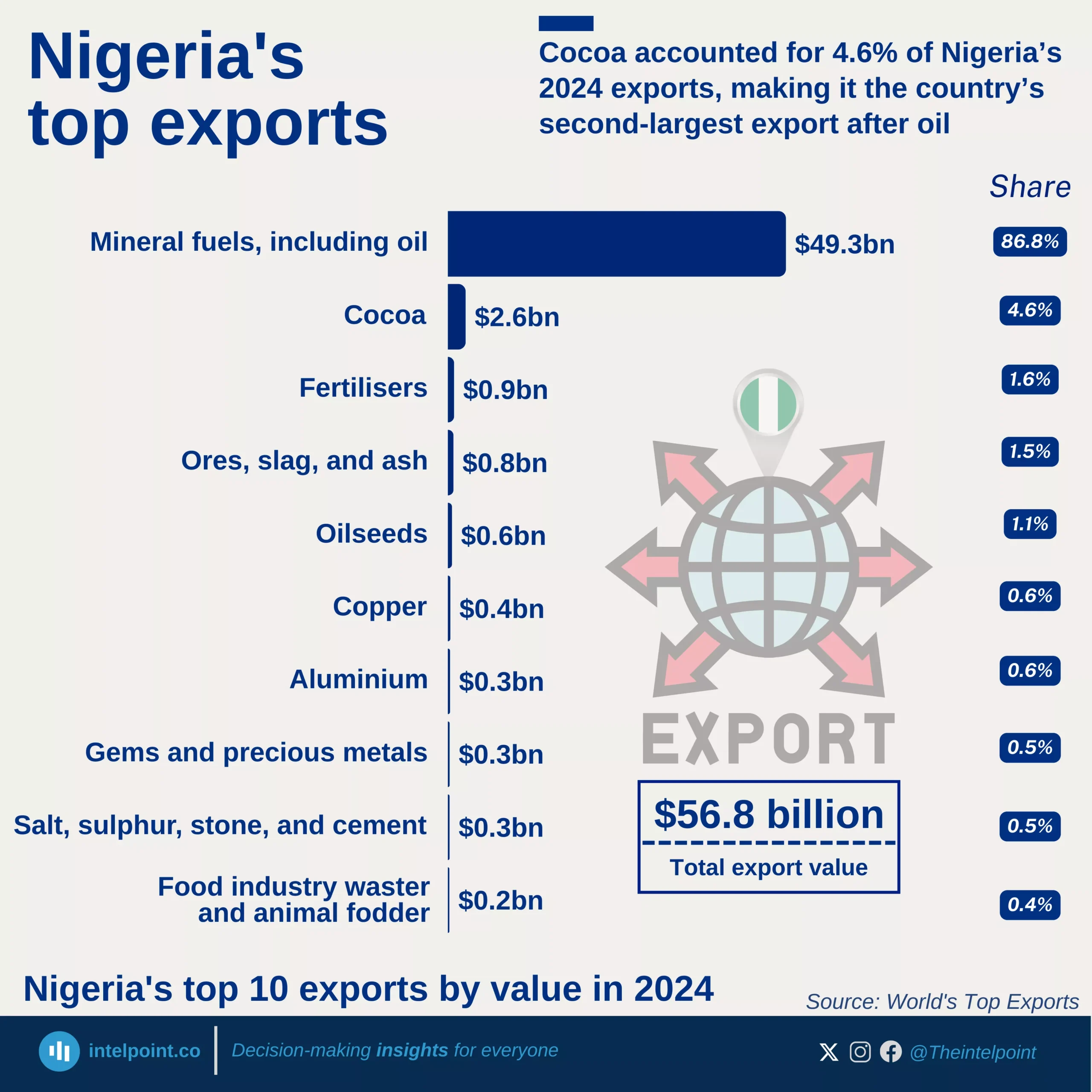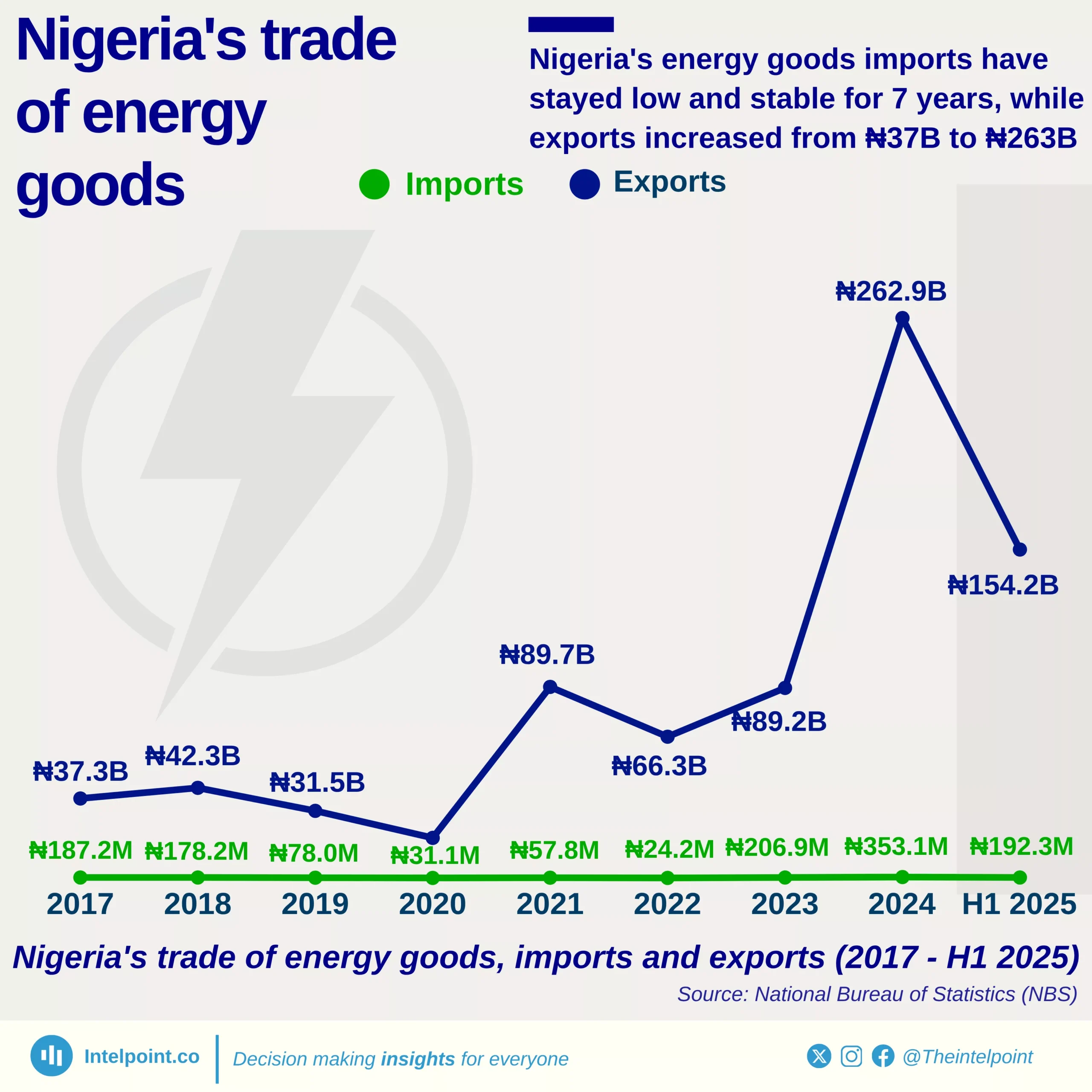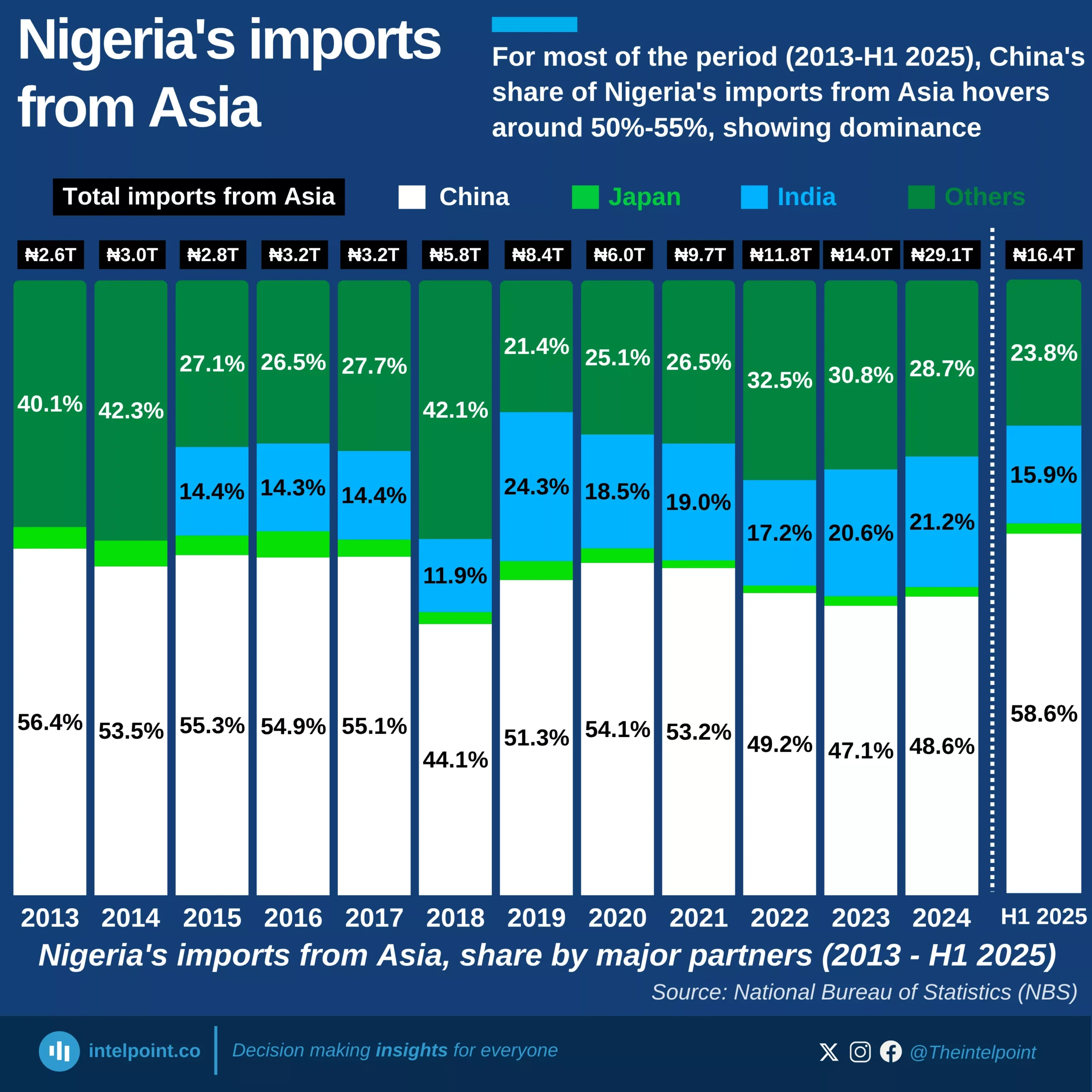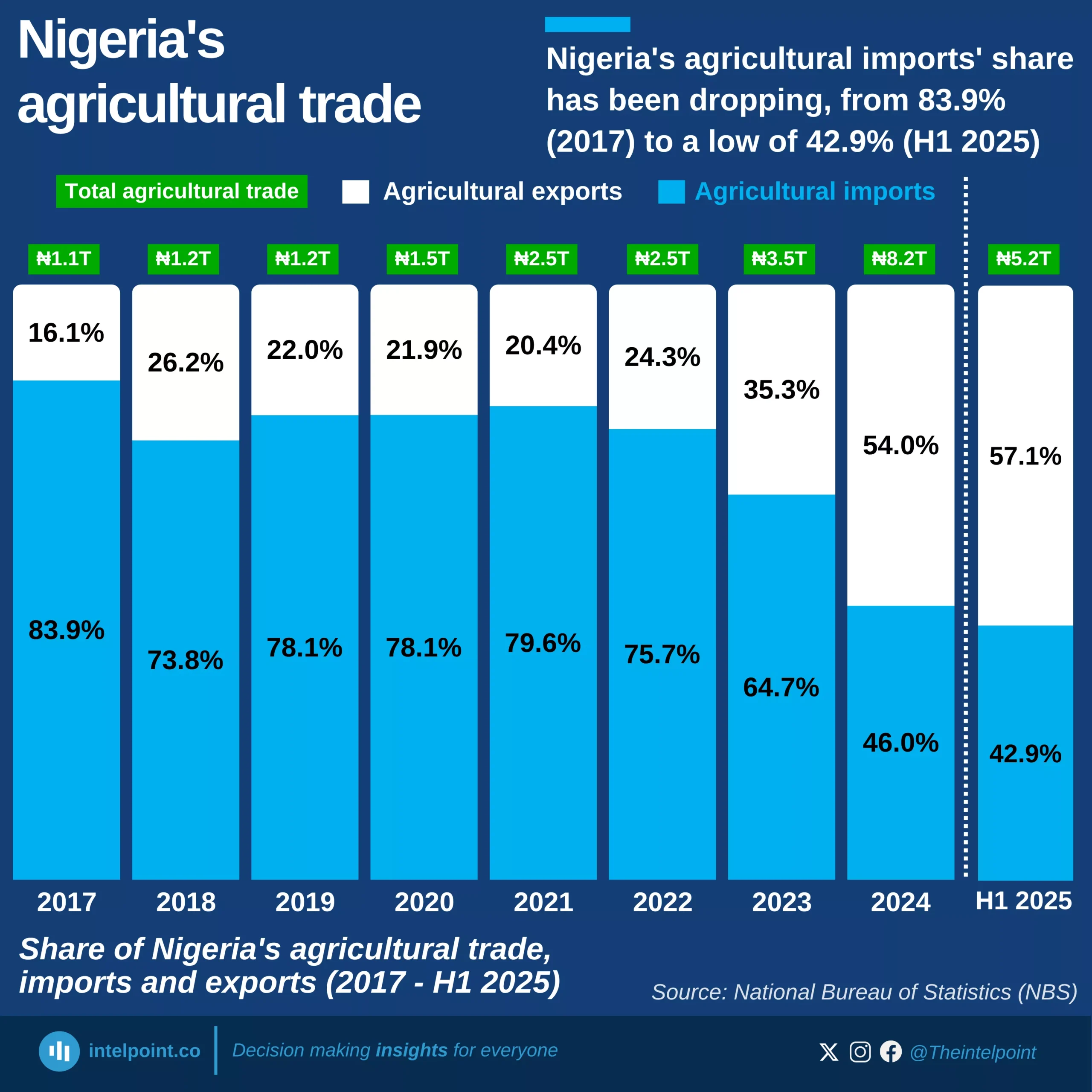Gold bullion dominates exports, contributing ¢163.0B (55.3%) of total exports.
Petroleum oils follow distantly at ¢52.6B (17.8%).
Cocoa (beans, paste, butter) remains a vital sector, collectively worth ¢24.7B (8.4%).
Manganese, cashew, tuna, iron/steel, and shea oil are niche contributors, each under 2% of exports.
In 2024, Ghana earned ₵294.9billion in total exports, which was largely driven by three major commodities. As one of Africa’s leading gold producers, the country earned ₵163.0 billion from gold bullion alone, making it by far the largest contributor to exports.
Crude petroleum oils (₵52.6 billion) and cocoa beans and superior quality raw beans (₵14.9 billion) followed distantly as the second and third highest earners. Together, these three commodities generated ₵237.1 billion, representing 78.2% of total export revenue.
This concentration highlights both the strength of Ghana’s natural resource endowment and the risks of relying on a narrow export base for foreign exchange and economic stability.
